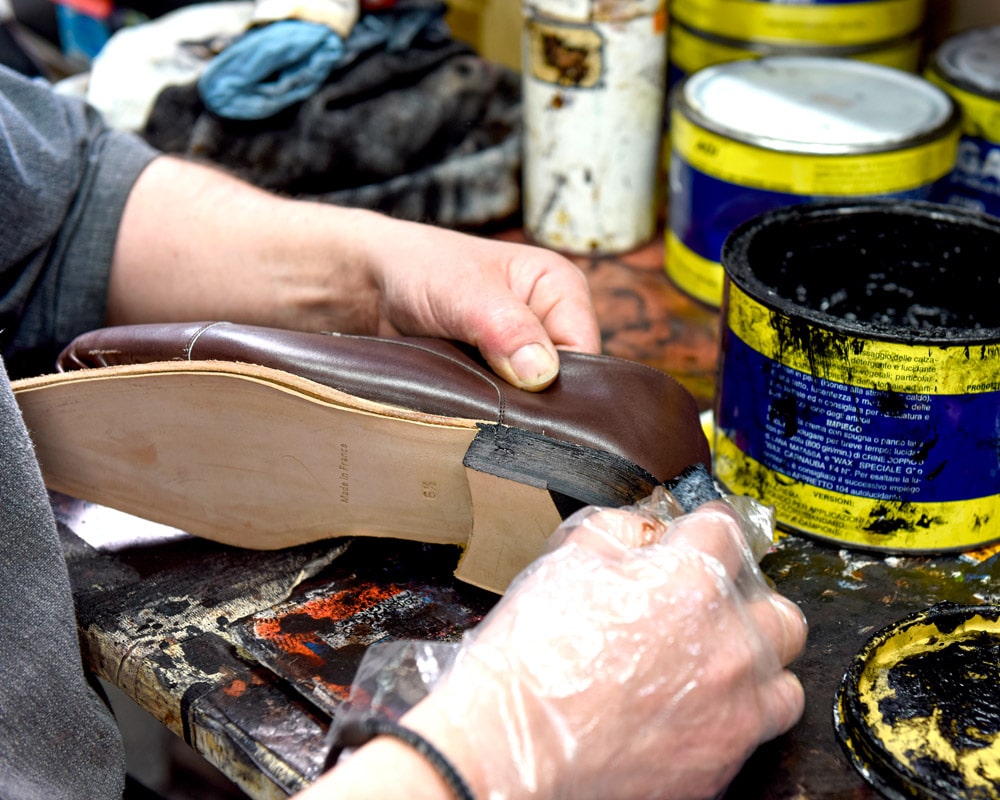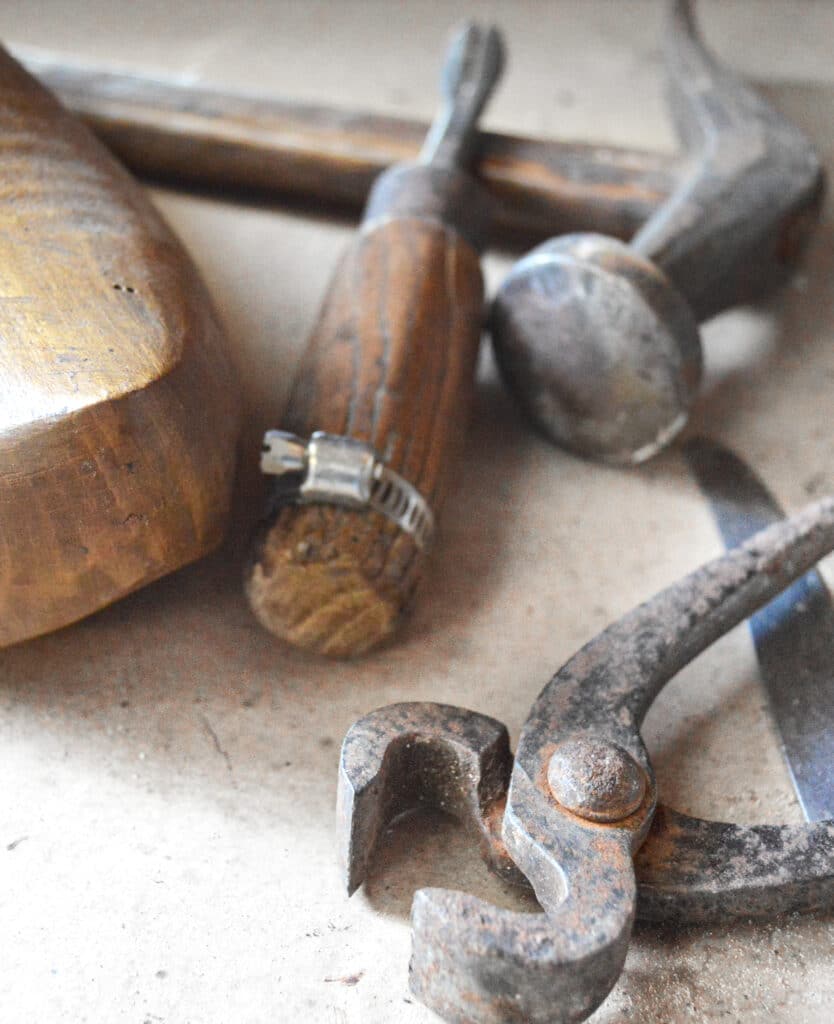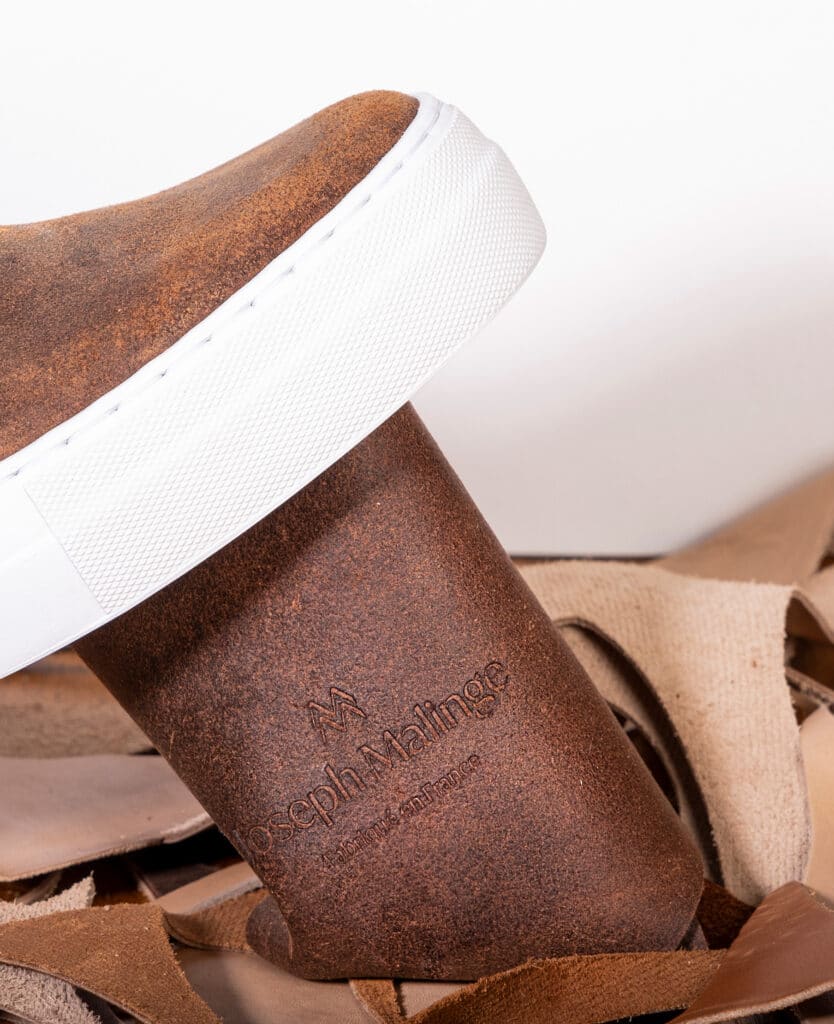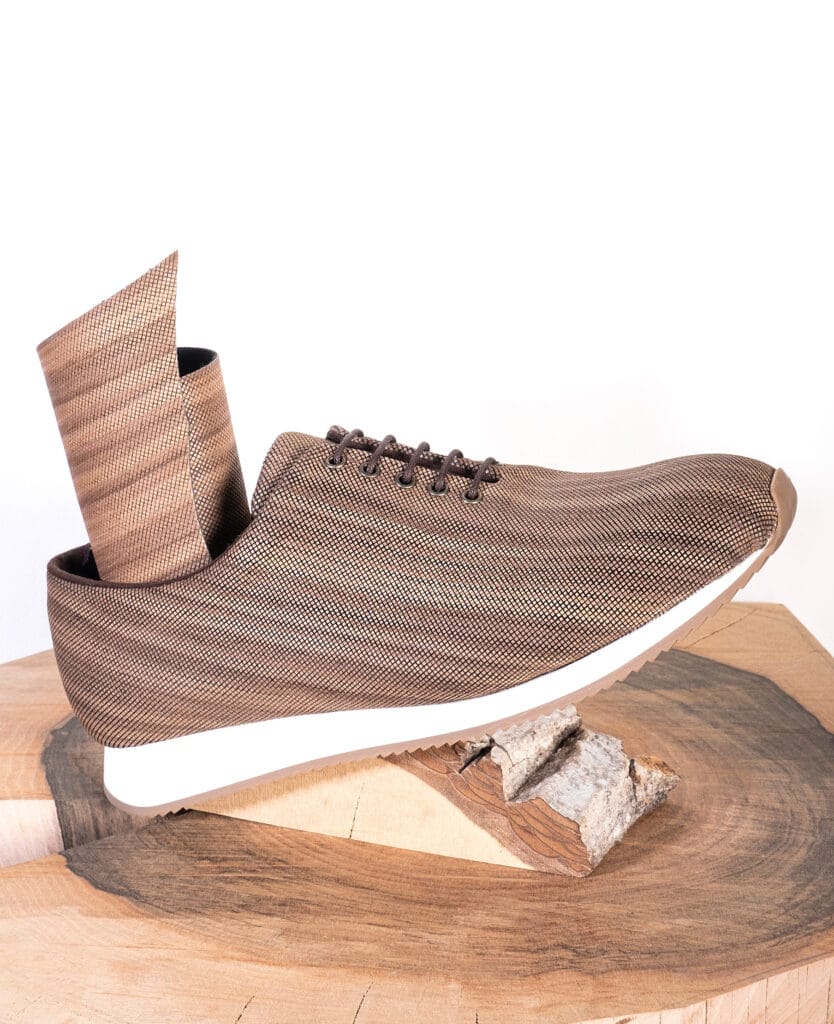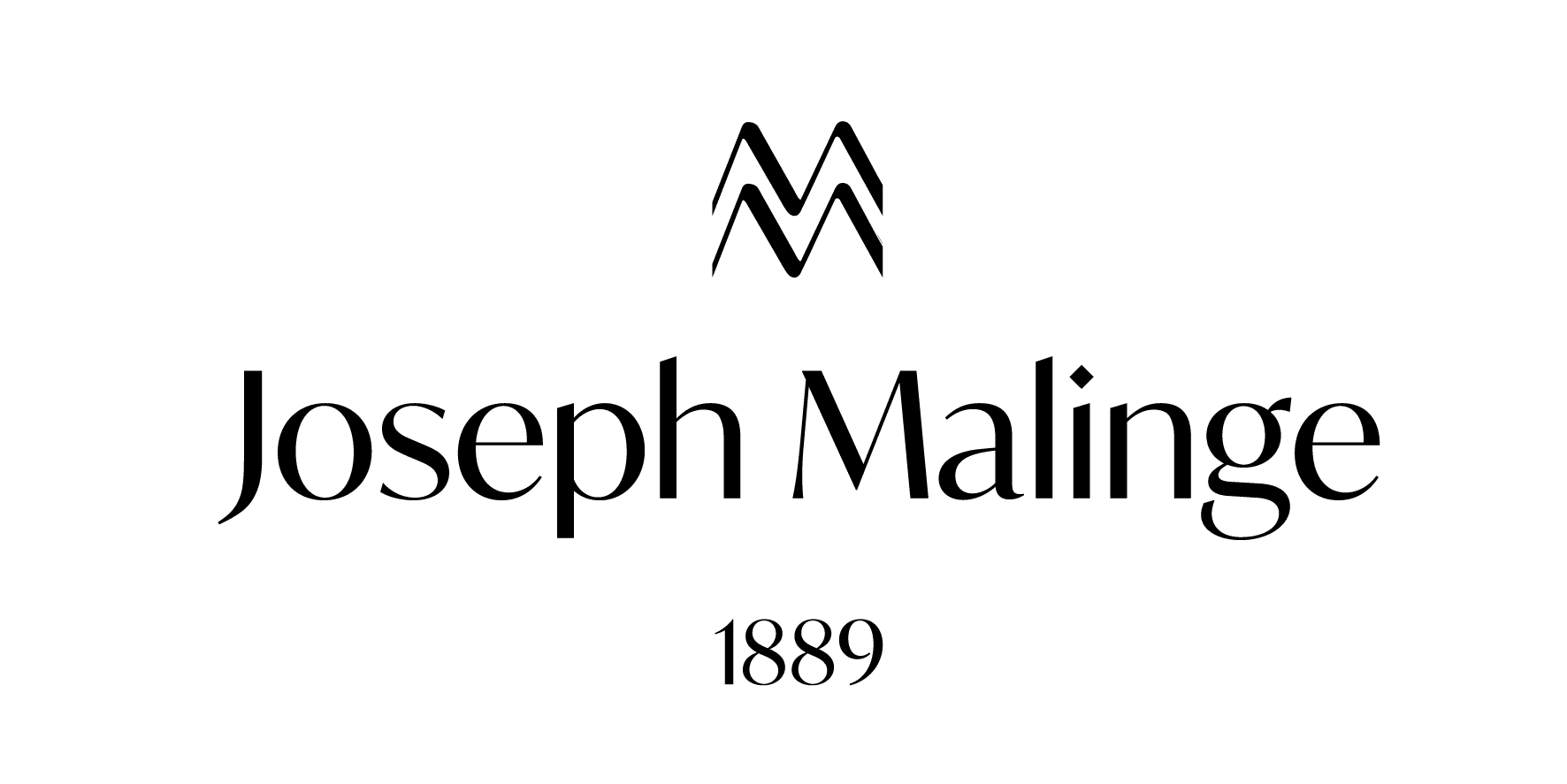Step 1 : The choice of materials
The choice of materials that make your shoes come to life
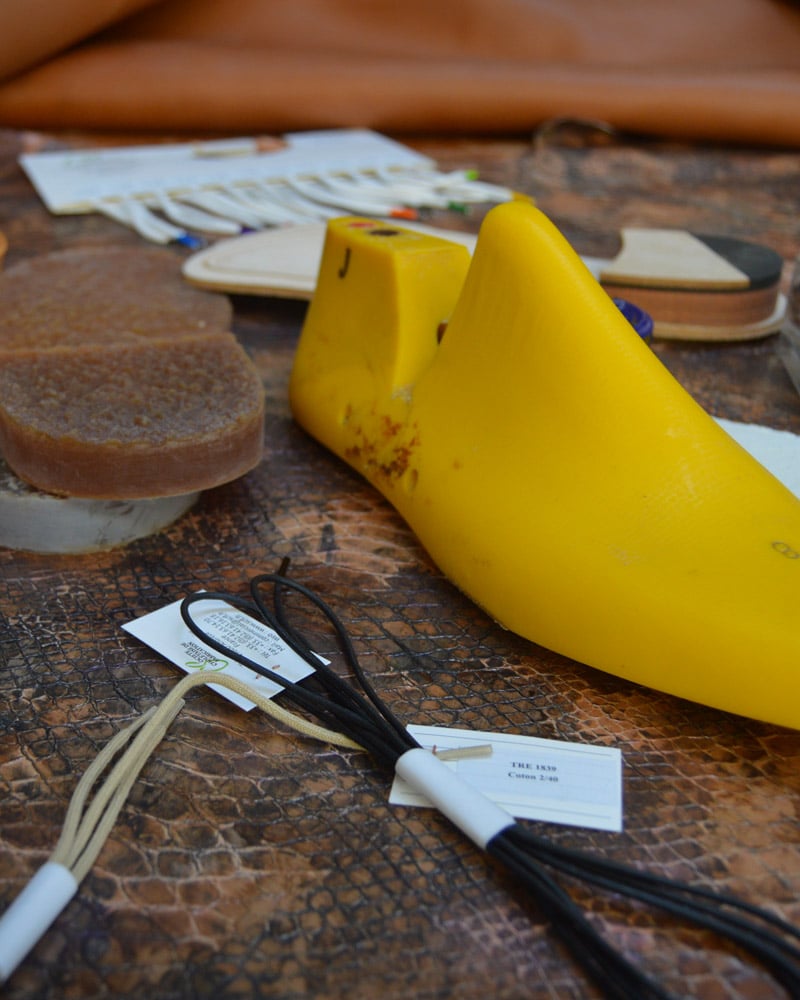
To find the ideal model for the season, we begin with a study of the current trends: fashion, shapes, colours and materials.
The selected skins come from full grain leathers to conserve the authenticity of their thickness. The colour of the leather lends charm to the shoe. Because French leather is not subjected to extreme temperatures. The hide is less breakable and thus more resistant to the flexing of the foot. With this in mind, Joseph Malinge choses a sole either in leather or rubber according to the attributes he wants to give to his shoes.
The next step is to find the soul of the shoe by using different shapes.
In order to bind the different materials together and make the shoes come to life, the last choice is the type of stitch: Blake stitch, Norwegian stitch, Goodyear stitch, little points.
Each type of stitching has its own particularities. Therefore, Joseph Malinge shoes are attentively studied and designed to be solid, comfortable and undeniably charming.
Once the choices have been made for the new collection, Joseph Malinge makes numerus sketches in order to visualize his future creations.
Step 2 : Pattern Making and Cutting
Starting the fabrication Making the pattern and cutting the leather
Creating the pattern involves all of the details of the shoe.
It is a plastic replica of the shoe on which the drawing is shaped (stiches, perforations, size, etc.).
To cut the leather, Joseph Malinge uses three techniques:
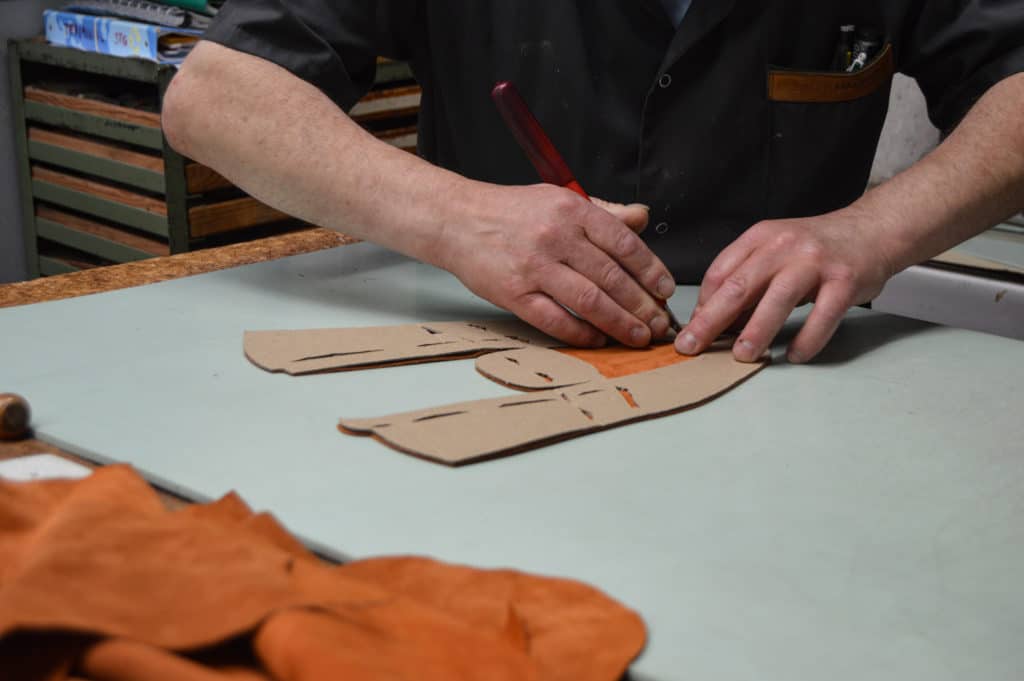
Manuel Cutting tool
The shoemaker cuts valuable leathers with precision using a hand held cutting tool. He is in direct contact with the leather by touching, stretching and turning it.
This gives him a better vision. It allowing him to see flaws, undesirable placement, thus avoiding future deformations.
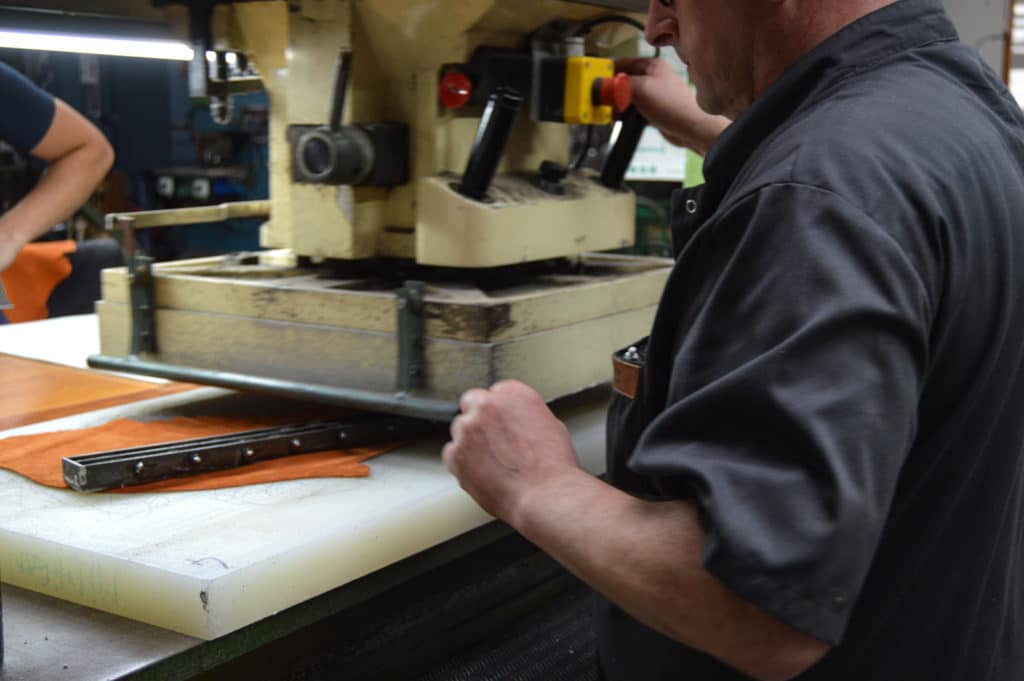
Press cutting
The cutter uses a template for cutting on the machine. He must pay attention to the direction of the skin in order to avoid unwanted cutting placements.
This method is faster and makes it easier to cut thick rigid hides, such as those for leather soles.
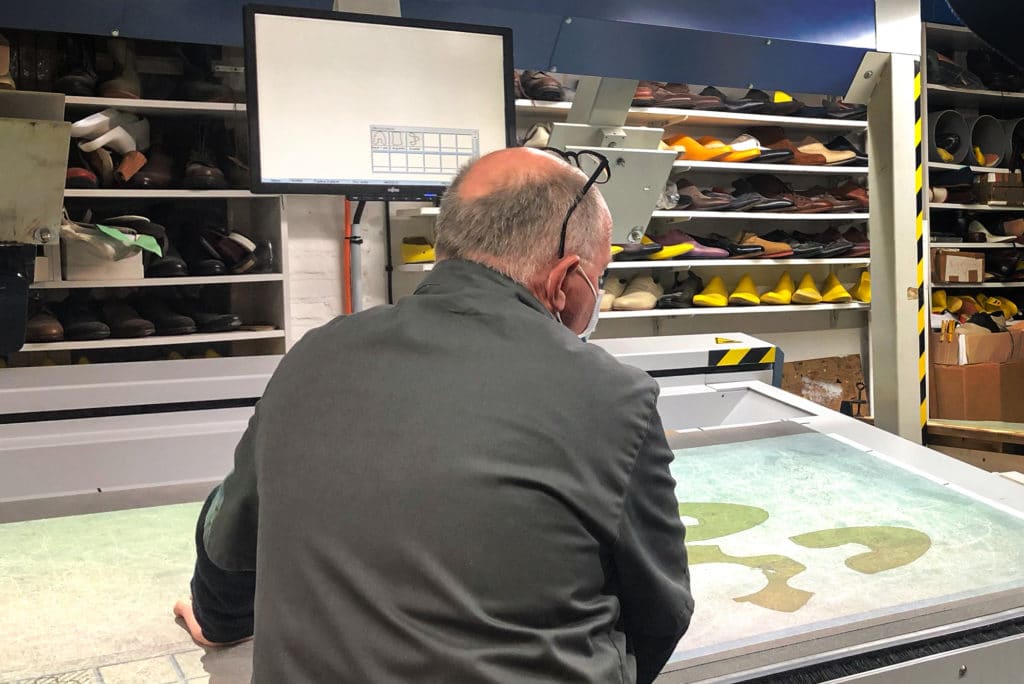
CAD (Computer Assisted Design) cutting
Using a projector, the computer sends an image of the pattern, directly onto the skin. The leather pieces are then cut by a cutting blade. A point tool and pencil trace the marks that will guide the stitching. A punch can also be used for making perforations.
These tools reproduce the leather cutterís gests perfectly. Using CAD simplifies the modifications linked to the design and technical needs. This method also prevents development over costs.
Step 3 : Stitching
Assembling the pieces : the preparation of the upper and stitching
Skiving and trimming is done by Joseph Malinge using a bell knife. The leather is beveled in order to have all the pieces fit perfectly together.
Once the trimming is completed, the stitching allows the pieces to be assembled. A meticulous job that allows the shoe to start taking shape.
In order to maintain the upper during the process, Joseph Malinge must pierce through the leather. The holes made with the help of a needle punch allow for the stitches to pass correctly, thus attaching the upper.
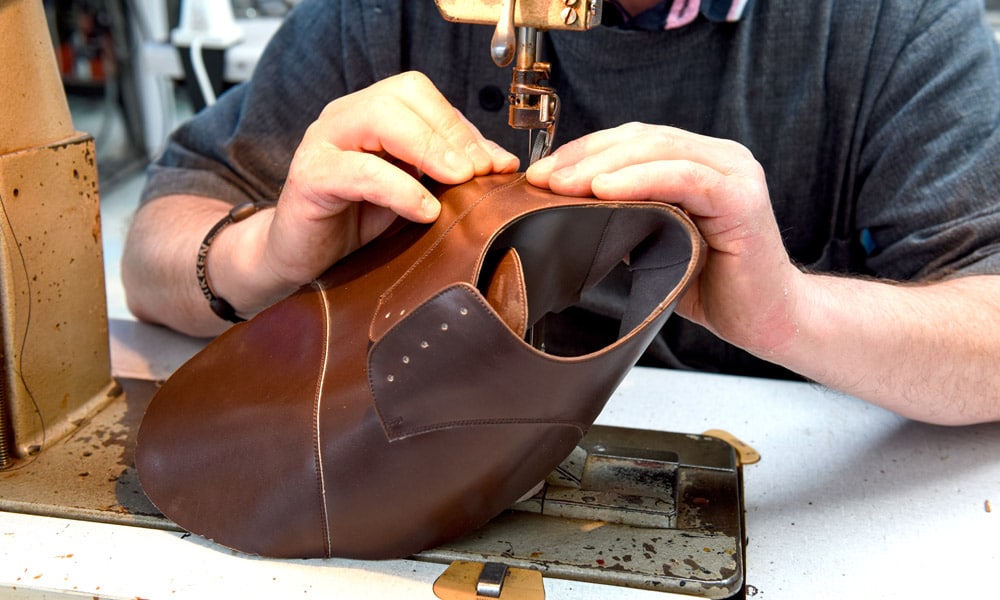
Step 4 : Assembling
Shaping the shoe
The assembly of the shoe consists of attaching the upper to the sole.
At this point a stiffener (counter) is inserted at the back of the shoe, between the leather and the lining,
maintaining the heel and giving elegance to the shoe.
At the toe, Joseph Malinge positions a stiff toe cap to keep the toe piece free from deformations.
Once this operation has been done the shoe can be assembled.
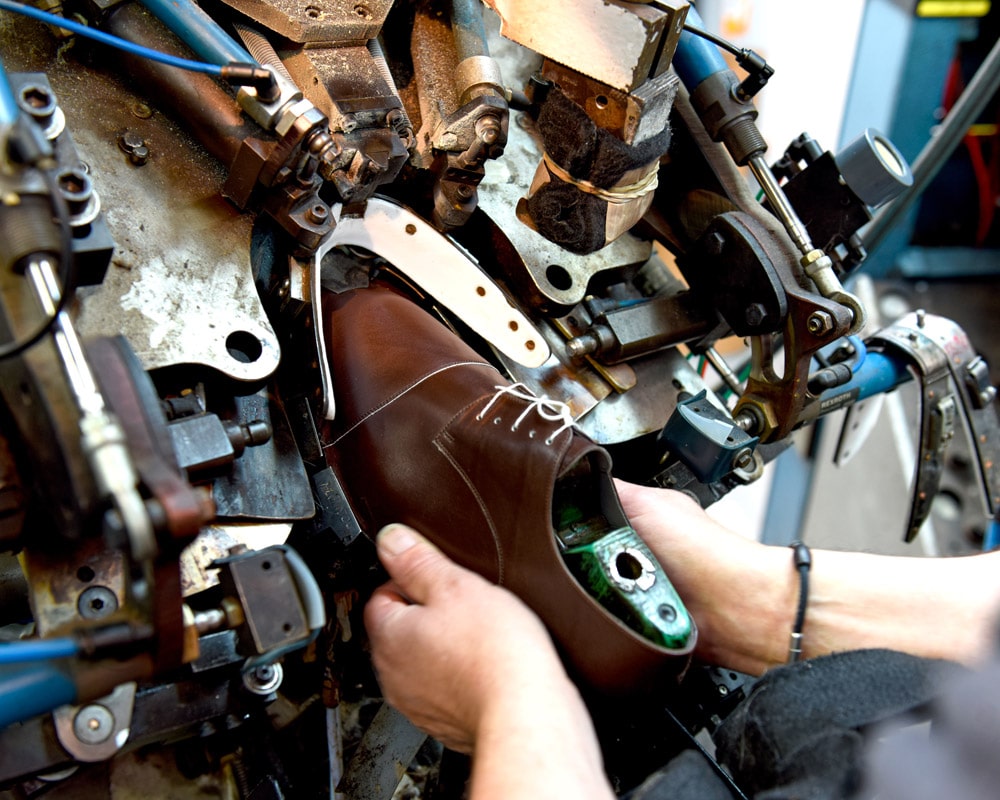
Firstly,
the assembly of the toe consists of positioning the upper onto the last using clamps.
For the shoe to gain the volume of the foot, Joseph Malinge pulls the sides of the leatherto mold it around the front of the last.
After being assembled, the rear of the shoe is then tacked together to keep it solid during the process.
When a pair of Goodyear or Norwegian welt sewn shoes is assembled, a filler of 100% natural cork from olive trees, is added to fill the space between the insole and the outer sole. This material insulates and absorbs and then releases the transpiration accumulated during the day. In time it forms to the shape of your foot. With this cork filler, your shoes are sound, and your feet are able to breathe.
A wooden shank is then placed at the level of the arch.
Wider and entirely natural, it supports your foot arch.
Step 5 : Sewing
For solid shoes : the welt seam stitch
Goodyear / Norwegian / Blake / Small point
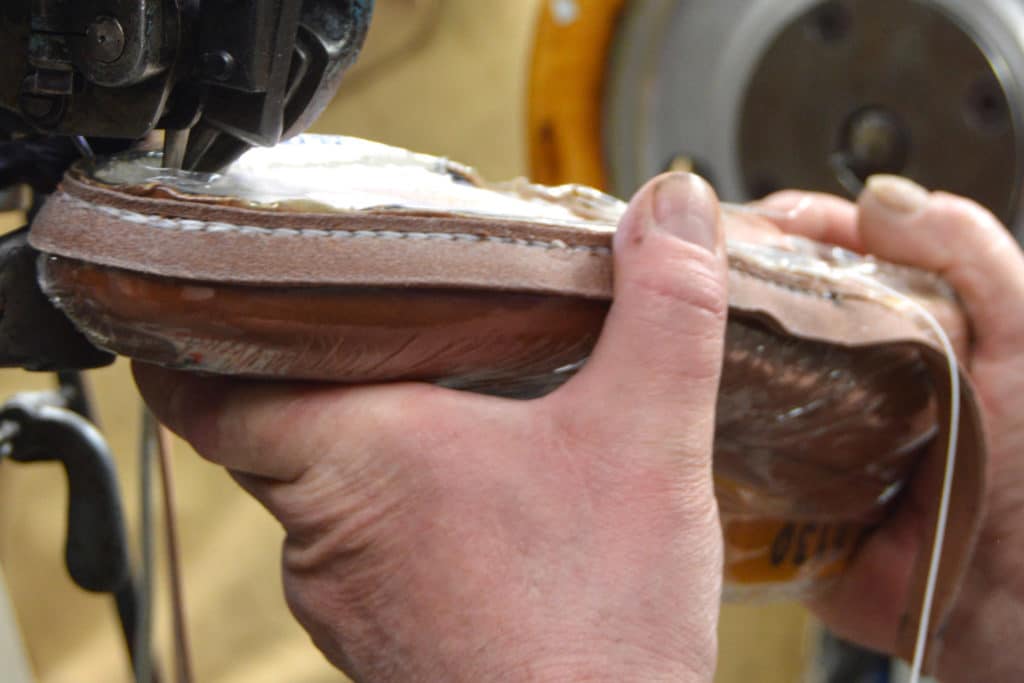
Goodyear welt stitch
For Goodyear welt assembly, Joseph Malinge starts by putting a canvas rib under the first leather piece.
This rib is used for stitching the upper to the inner sole. This method makes resoling easier and also allows your shoes to be nearly waterproof.
Goodyear welt shoes have an amazing life span. They adapt to your feet for an unequalled comfort.
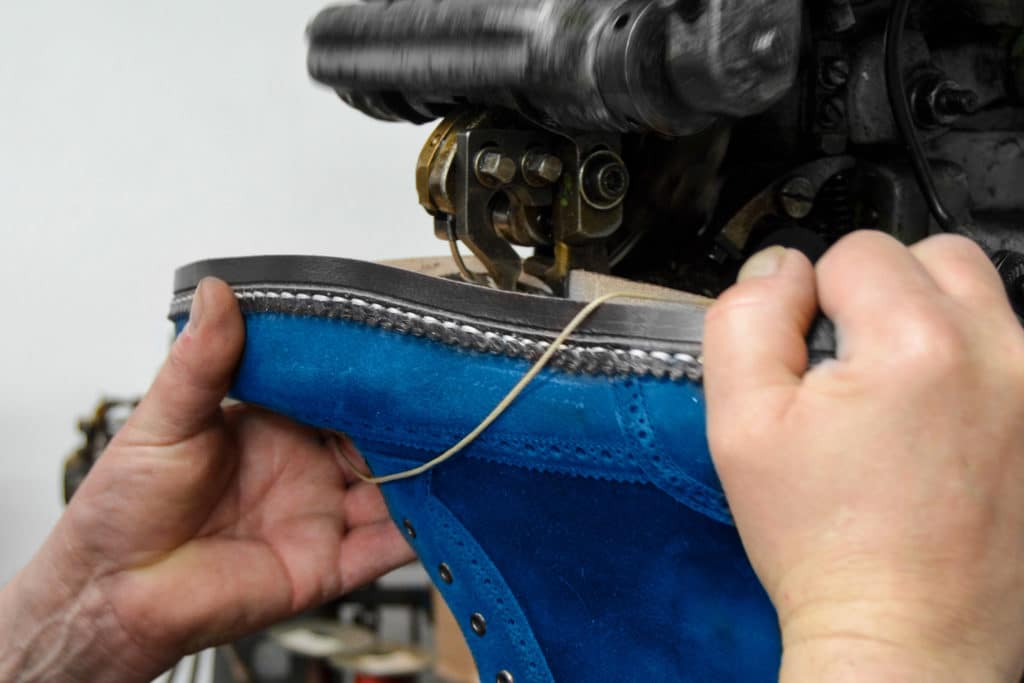
Norwegian welt stitch
The leather inner sole on a Norwegian welt uses a double chain stitch
It involves to assemble the inner sole, the rib, and the upper, using one thread. This method makes the shoe more flexible for the foot.
The Norwegian welt is reserved for shoes that are more upscale and resistant to all types of surfaces.
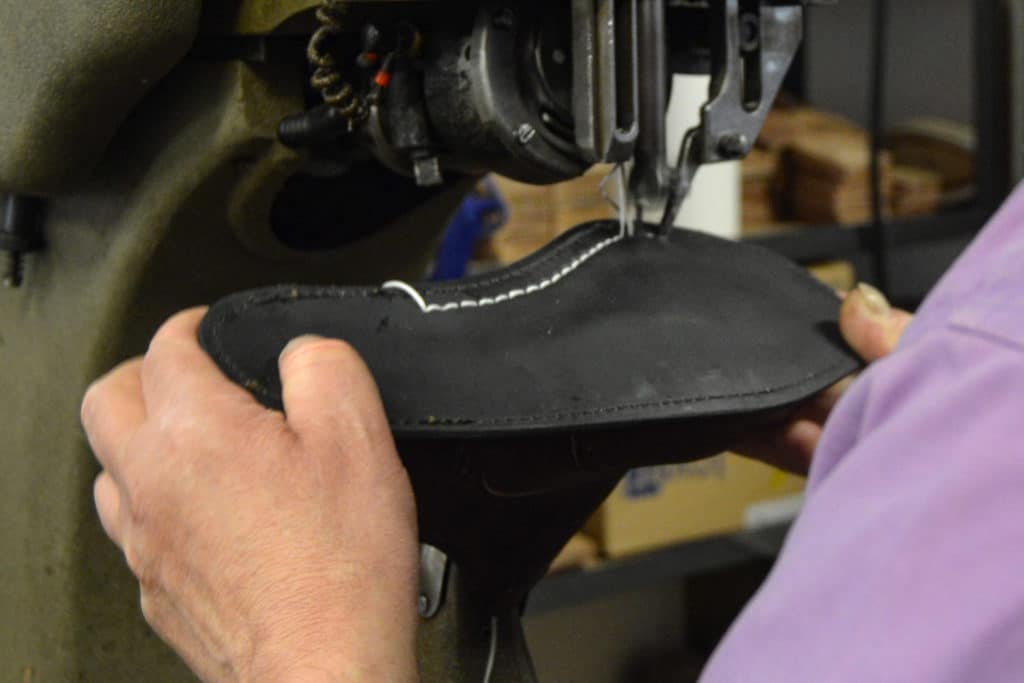
Blake stitch
Well known for the elegance it gives to shoes, the Blake stitch, consists of attaching the upper to the outsole and insole with 2 solid threads.
The upper is folded down below the insole. Joseph Malinge adds a leather reinforcement and a wooden shank to even out the shoe. The sole is glued to make a discrete, sleek shoe.
Finally, the shoe is stitched from the inside (the insole side) to the outside (the outsole).
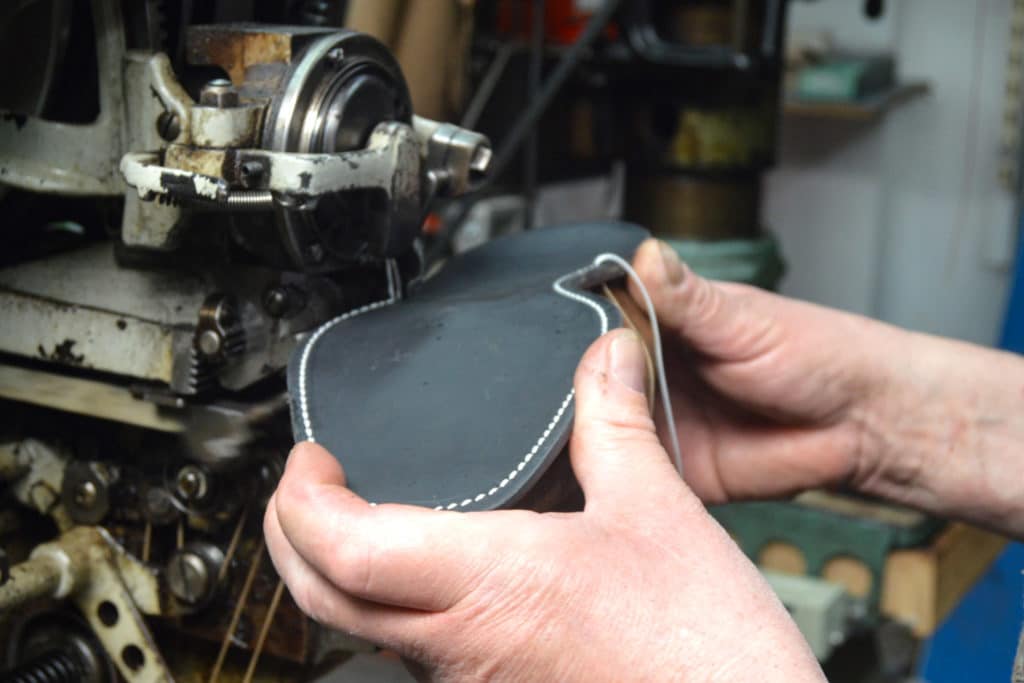
Small point seam
Shoes stitched small points are made using a double stitch.
The method consists of tying the inner thread with the outer thread. The 2 threads are lightly treated with a glue in order to prevent them from slipping and untying. This outside stitch fastens the leather to the sole.
Thanks to the small points stitch, your shoes have an impressive resistance over time.
Step 6 : Finishing
Hand finishing for a perfect shoe
Your luxury shoes are hand finished, revealing all the beauty of the leather with a perfect patina.
This is the result of an exceptional know how and the use of the highest quality waxes.
Your shoes are waxed and polished by hand.
The waxes used are a base of beeswax, well known for its quality and benefits to the leather. Beeswax deeply nourishes and protects the leather, and gives a beautiful shine to your shoes.
Joseph Malinge uses the method of hand waxing on the leather, sole, and heal.
The leather needs several repetitive actions with different waxes and brushings to give it back its natural aspect and brilliance.
